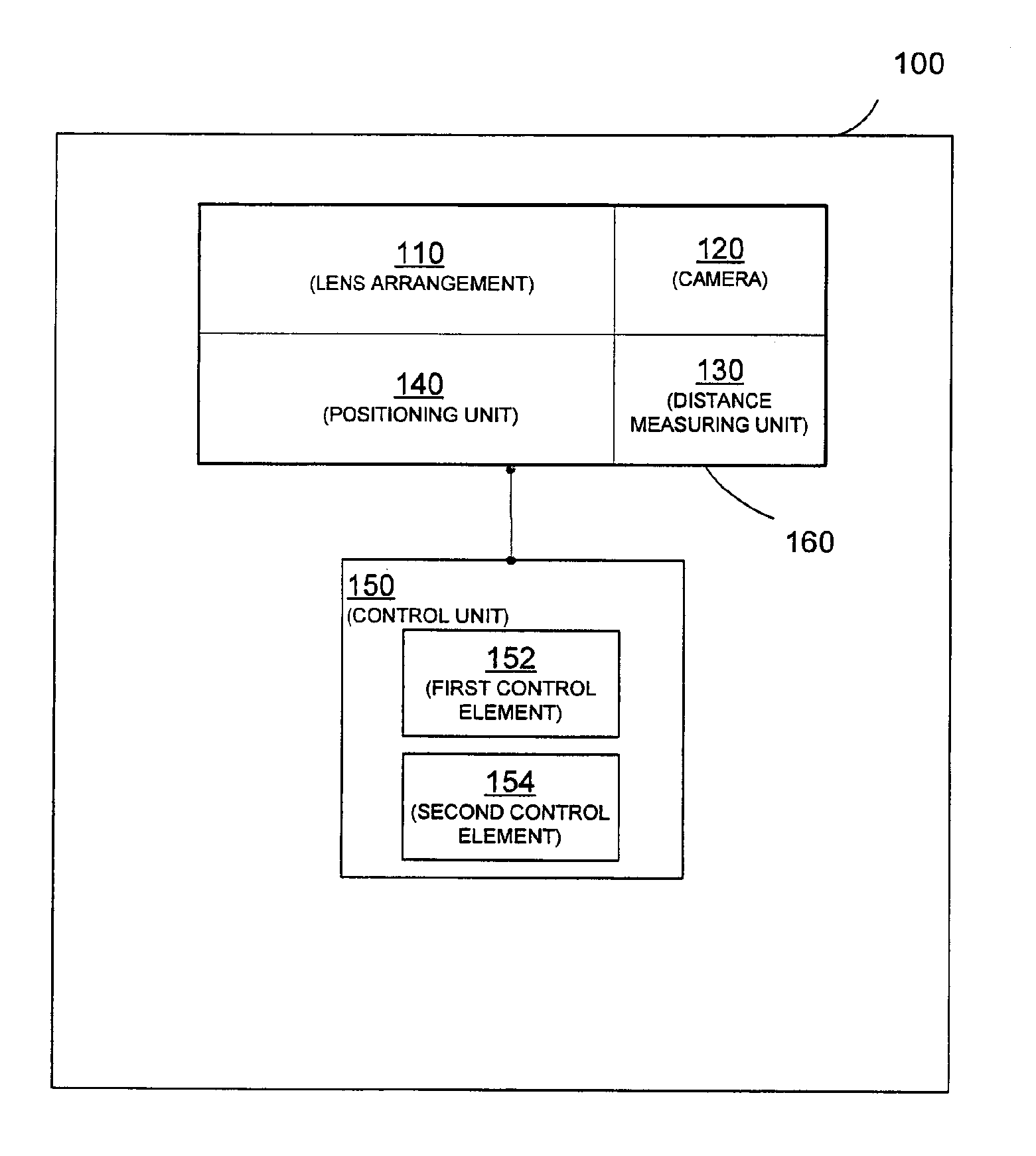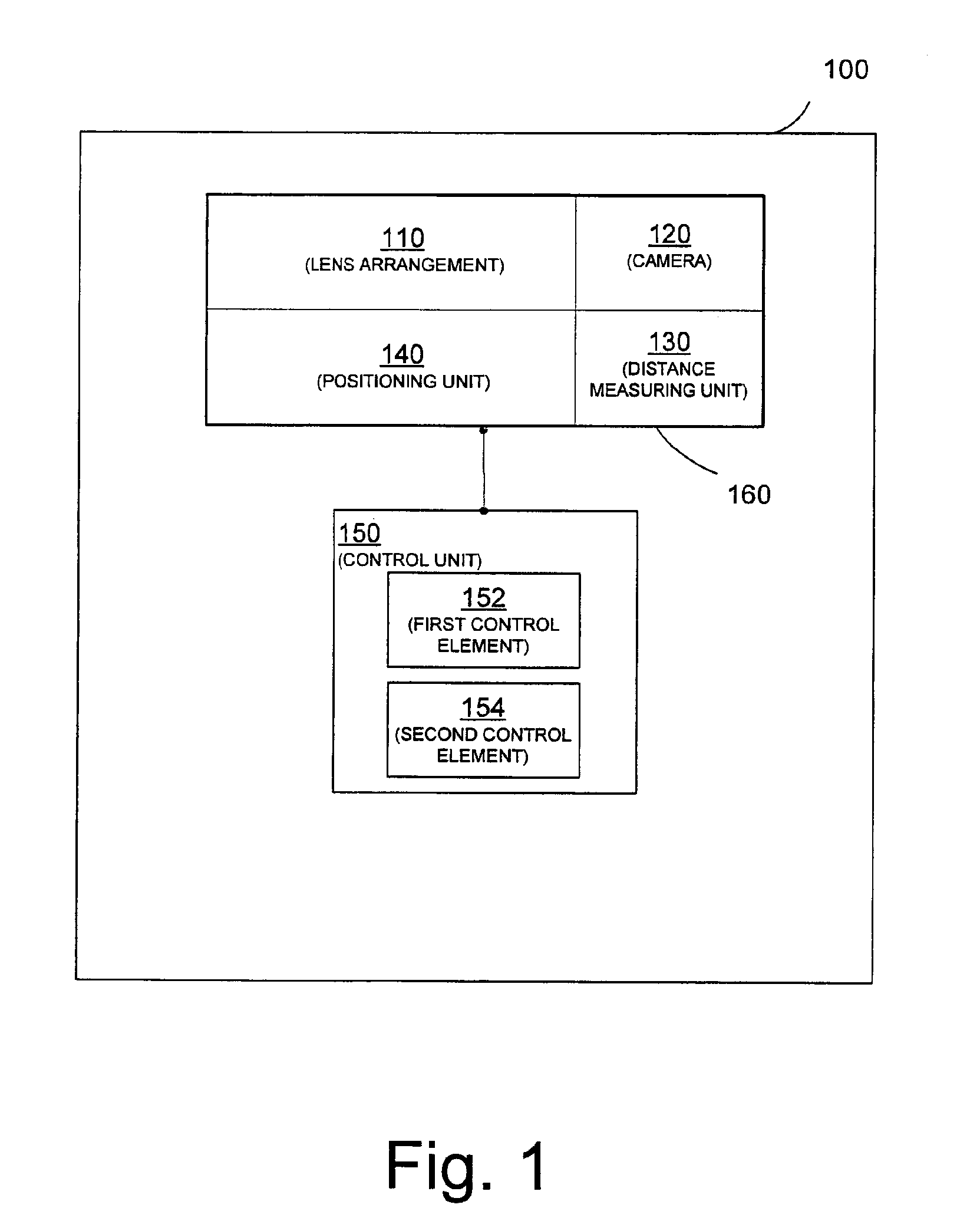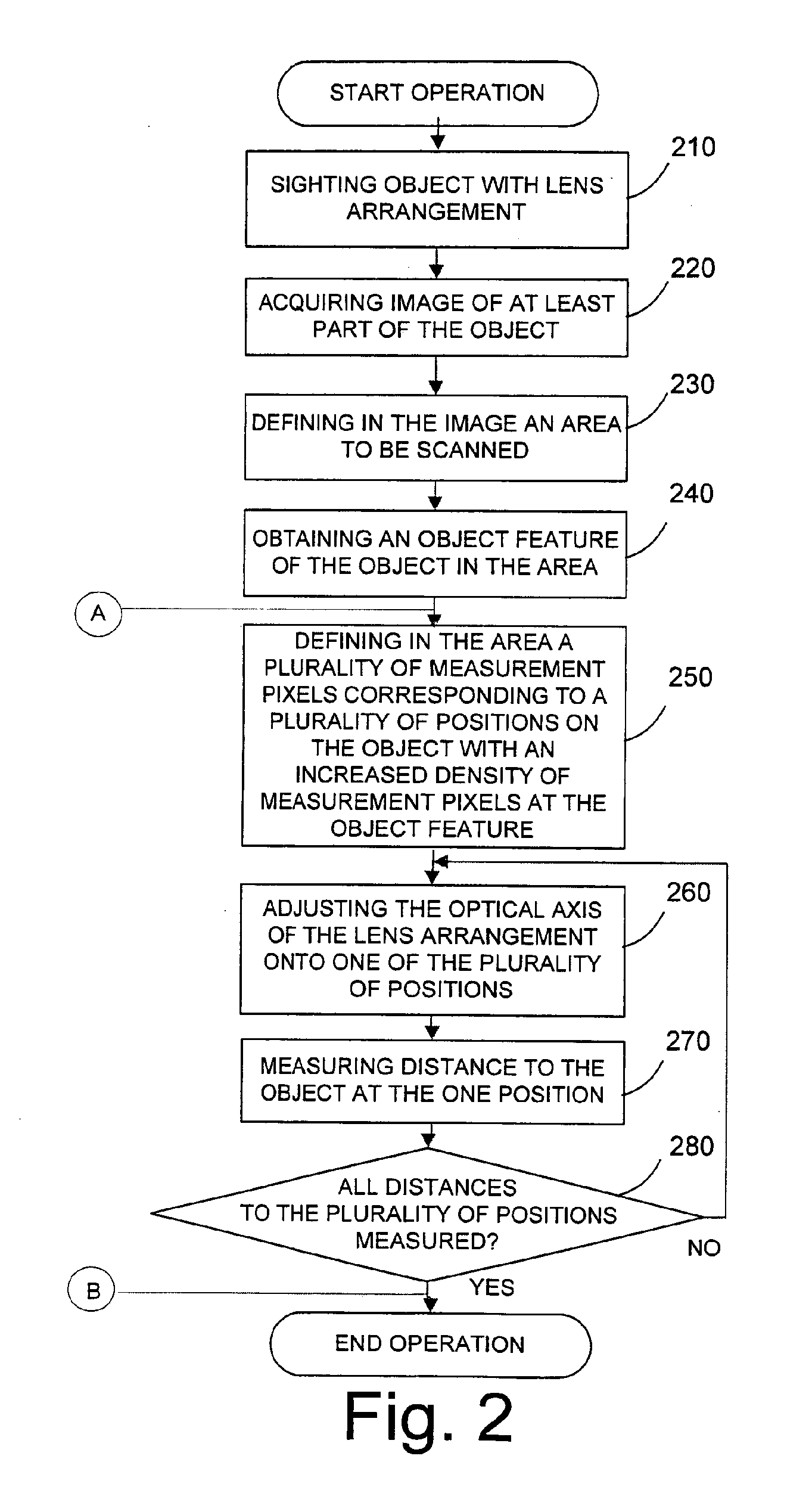Optical instrument and method for obtaining distance and image information
a technology of optical instruments and distance and image information, applied in instruments, measurement devices, surveying and navigation, etc., can solve the problems of difficult obtaining the coordinates of the exact position to be measured, time-consuming, and time-consuming for three-dimensional data acquisition, so as to improve image acquisition accuracy and speed, improve data acquisition, and improve the effect of distance measurement accuracy
- Summary
- Abstract
- Description
- Claims
- Application Information
AI Technical Summary
Benefits of technology
Problems solved by technology
Method used
Image
Examples
Embodiment Construction
[0047]Preferred embodiments of the invention are described with reference to the Figures. It is noted that the following description contains examples only and should not be construed as limiting the invention.
[0048]Embodiments of the invention generally relate to obtaining distance and image information of an object, and particularly, to improve the speed of data acquisition by intelligently selecting positions to be measured and to improve the accuracy of data acquisition by recalculating coordinates of selected positions on an object. Briefly said, an image is acquired with a camera and an area to be scanned and measurement pixels of an object are defined in the image, wherein the measurement pixels are converted into an approximation of coordinates of positions to be measured assuming a default distance to the positions, and the optical axis of a lens arrangement is adjusted sequentially onto the positions to be measured and after measuring the distances to the positions, the co...
PUM
 Login to View More
Login to View More Abstract
Description
Claims
Application Information
 Login to View More
Login to View More - R&D
- Intellectual Property
- Life Sciences
- Materials
- Tech Scout
- Unparalleled Data Quality
- Higher Quality Content
- 60% Fewer Hallucinations
Browse by: Latest US Patents, China's latest patents, Technical Efficacy Thesaurus, Application Domain, Technology Topic, Popular Technical Reports.
© 2025 PatSnap. All rights reserved.Legal|Privacy policy|Modern Slavery Act Transparency Statement|Sitemap|About US| Contact US: help@patsnap.com



